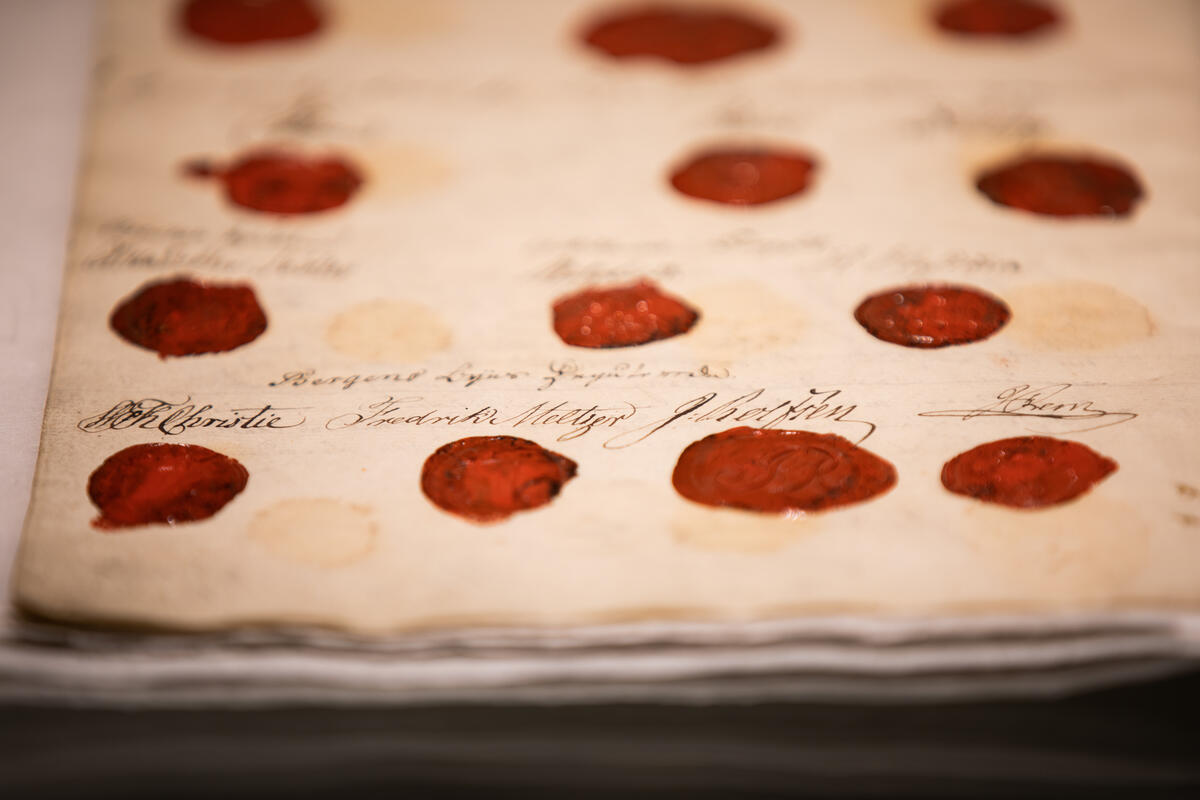-
foto:"Grunnloven av 17. mai 1814." (CC BY-NC-ND 2.0) by Bilder fra Stortinget
- Union with Denmark: At the start of the year Norway was part of a union with Denmark that had lasted for more than 400 years. King Frederik VI was absolute ruler of Denmark-Norway.
- The Napoleonic wars in Europe: Having previously become an ally of France, Denmark-Norway was on the losing side when Napoleon was defeated in 1813.
- Norway is ceded to Sweden: Under the Treaty of Kiel, signed on 14 January 1814, Denmark was forced to surrender Norway to Sweden – one of the victors of the Napoleonic wars .
- Should Norway become an independent nation? YES! Prince Christian Frederik, the Danish vice-regent in Norway (who ruled the country on behalf of King Frederik VI), sought the advice of leading Norwegian figures at a meeting at Eidsvoll on 16 February. Here it was decided to summon representatives to a Constituent Assembly who would declare Norway an independent nation, frame a constitution and elect a king.
- The prince summons a Constituent Assembly: Prince Christian Frederik organised the first elections ever held in Norway – to choose representatives to travel to Eidsvoll and take part in the Constituent Assembly. The elections took place in parish churches and military units.
- 112 men meet at Eidsvoll to frame the Constitution: On 10 April the elected representatives to the Constituent Assembly met for the first time at Eidsvoll Manor House. Two committees were appointed: the Constitutional Committee, whose task was to draft proposals for the Constitution’s various articles; and the Finance Committee, whose task was to assess the country’s financial situation. The Constituent Assembly was divided into two parties: those who wanted complete independence, and those who favoured union with Sweden.
- Finished in six weeks: By 16 May the wording of the Constitution had been finalised. Independence was declared and power divided between the king/government, a national assembly elected by the people (called the Storting), and the courts. The foundations for democracy had been laid.
- 17 May 1814: This was the day the Constitution was dated, and Christian Frederik elected King of Norway.
- The assemblymen return home: On 20 May the members of the Constituent Assembly came together for the last time. They all shook hands and swore to be ‘faithful and true until Dovre falls’, before each going their separate ways
- Sweden attacks Norway: A brief war was fought in the Østfold region, close to the border with Sweden. Norway’s King Christian Frederik lost to Sweden’s Crown Prince Carl Johan (formerly General Jean Baptiste Bernadotte, Marshal of France), who had command of his country’s army.
- Peace negotiations between Norway and Sweden in Moss: King Christian Frederik succeeded in securing Sweden’s agreement that Norway could retain its constitution more or less intact, but had to promise to renounce the Norwegian throne.
- The Storting convenes for the first time: The new Norwegian parliament (the Storting) met in Christiania (now Oslo) for the first time in October. The Storting drew up the amendments necessary to adapt the Eidsvoll Constitution to union with Sweden.
- Union with Sweden and a Swedish king: On 4 November the Storting adopted the amended Constitution and Norway entered into a union with Sweden. At the same time, Sweden’s King Carl XIII was elected king of Norway.
